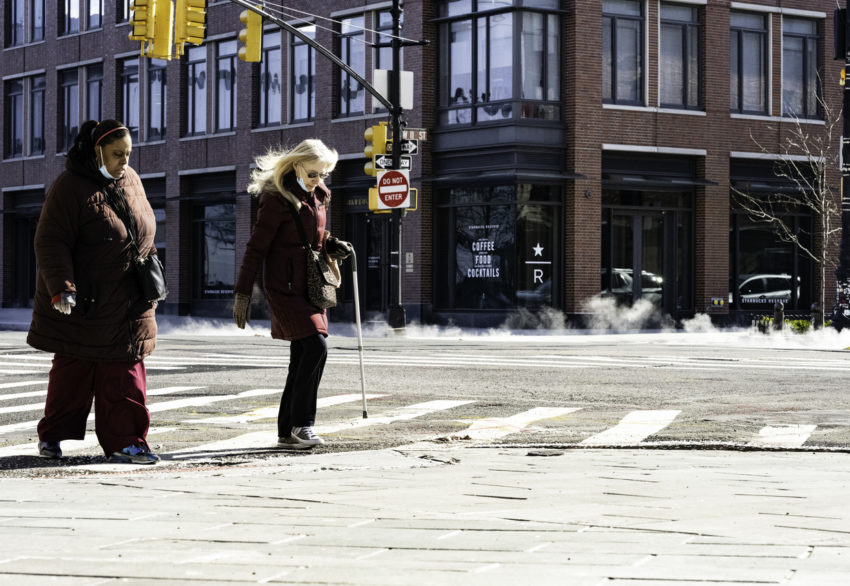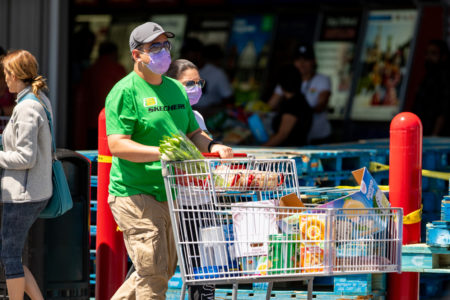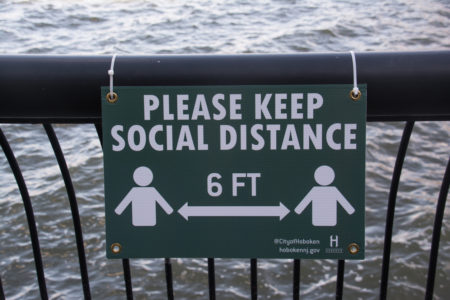
Share On Social!
Systemic, health inequities impacting disadvantaged groups are rampant in America and they’re causing those individuals to suffer worse, even fatal, COVID-19 outcomes.
Early reports suggested that those disparities would play a role in the current coronavirus spread, making minority groups, including Latinos, more likely to suffer severe harm.
Now, weeks into the American pandemic, early reports from hotbed areas—such as Oregon and New York City—are proving that prediction true.
“There are clear inequalities, clear disparities in how this disease is affecting the people of our city,” New York City Mayor Bill de Blasio told the New York Times. “So many people struggle to get the healthcare they need, who didn’t have the money to afford the healthcare they deserved. So many people have lived with chronic healthcare conditions.”
UPDATE 4/14/20: In Bexar County, Texas, 51% of 711 coronavirus cases are Latinos. In the whole county, 60% of the population is Latino. African Americans are over-represented in the data (13% of cases and 30% of deaths), even though they are only 8% of the county population. San Antonio is the biggest city in Bexar County.
Rates of Coronavirus Deaths in High Outbreak Areas
Major metropolitan areas throughout the U.S. have been some of the hardest-hit zones during this pandemic.
Worse, minority populations have seen some of the worst outcomes.
In Oregon, one of the first outbreak areas, Latinos account for 18% of the state’s positive coronavirus tests. They only make up 13% of its state population, however.
“We are certainly concerned about it and are certainly taking a lot of steps to prevent this and to continue to target and focus our efforts on this vulnerable population and others,” said Dr. Dawn Mautner, senior health advisor for the Oregon Health Authority, told The Oregonian. “I’m working fiercely to figure out what may be pushing the numbers in any of these vulnerable populations higher and get out in front of it.”
Numbers are worse in New York City. There, Latinos face higher death rates than any other race group, according to the New York Times.
The preliminary death rate for:
- Latinos – 22 people per 100,000;
- Blacks – 20 per 100,000;
- Whites – 10 per 100,000;
- Asians – 8 per 100,000
“We are watching, in real-time, racial disparities and the pandemic of poverty,” Michael Blake, a city assemblyman in New York City, told the New York Times.
Health Inequities Impacting Coronavirus Outcomes
Across the board, Latinos and other groups experiencing inequity also face higher rates of health complications.
These complications can range from more significant diagnoses of issues such as heart disease to higher chances of contracting illnesses such as cancer.
“Where we are seeing these inequities are places and populations that have historically had higher rates of underlying chronic illnesses and certainly, those chronic underlying illnesses put these individuals at greater risk for poorer health outcomes,” New York City Health Commissioner Dr. Oxiris Barbot told the New York Daily News.
These conditions can impact a person’s likelihood of surviving coronavirus or suffering severe consequences.
Systemic Disparities Impacting Coronavirus Outcomes
Worse, the system that should be protecting Americans—local, state, and federal law—is, in fact, hurting some more than others, some experts say.
Still, these inequities, such as healthcare access, pollution, wealth gaps, paid sick leave, job security, and countless others, have left disadvantaged communities open to bear the brunt of a horrific outbreak.
For Latinos, one issue in these hotbed areas is impacting whether Latinos will seek medical treatment at all: Xenophobic rhetoric and policy that has come from the current administration.
“The overlay of the anti-immigrant rhetoric across this country, I think, has real implications in the health of our community,” Dr. Barbot told the New York Times.
Without serious action that lessens the burdens people of color face, this crisis will wreak havoc in specific communities more than others.
“We need to know the racial breakdown in rates of testing and of positive confirmed cases to find and correct these clear failures,” New York City Public Advocate Jumaane Williams told Politico. “The coronavirus may not discriminate, but the response, or lack of response, clearly has.”
How You Can Step Up to Raise Awareness of Inequities
These systemic inequities won’t be solved overnight.
But there are things you can do now, even amid coronavirus, to help raise awareness of them.
Get a “Health Equity Report Card” for your area! Select your county name and get a customized Health Equity Report Card by Salud America! at UT Health San Antonio.
You will see how your area stacks up in housing, transit, poverty, health care, healthy food, and other health equity issues. These data compare to the rest of your state and nation.
Then email your Health Equity Report Card to decision-makers, share it on social media, and use it to make a case for community change to boost health equity for the long-term.
Get your health equity Report Card!
Explore More:
Health EquityBy The Numbers
1
out of 10
Pedestrians survive when hit by a car at 40 MPH



